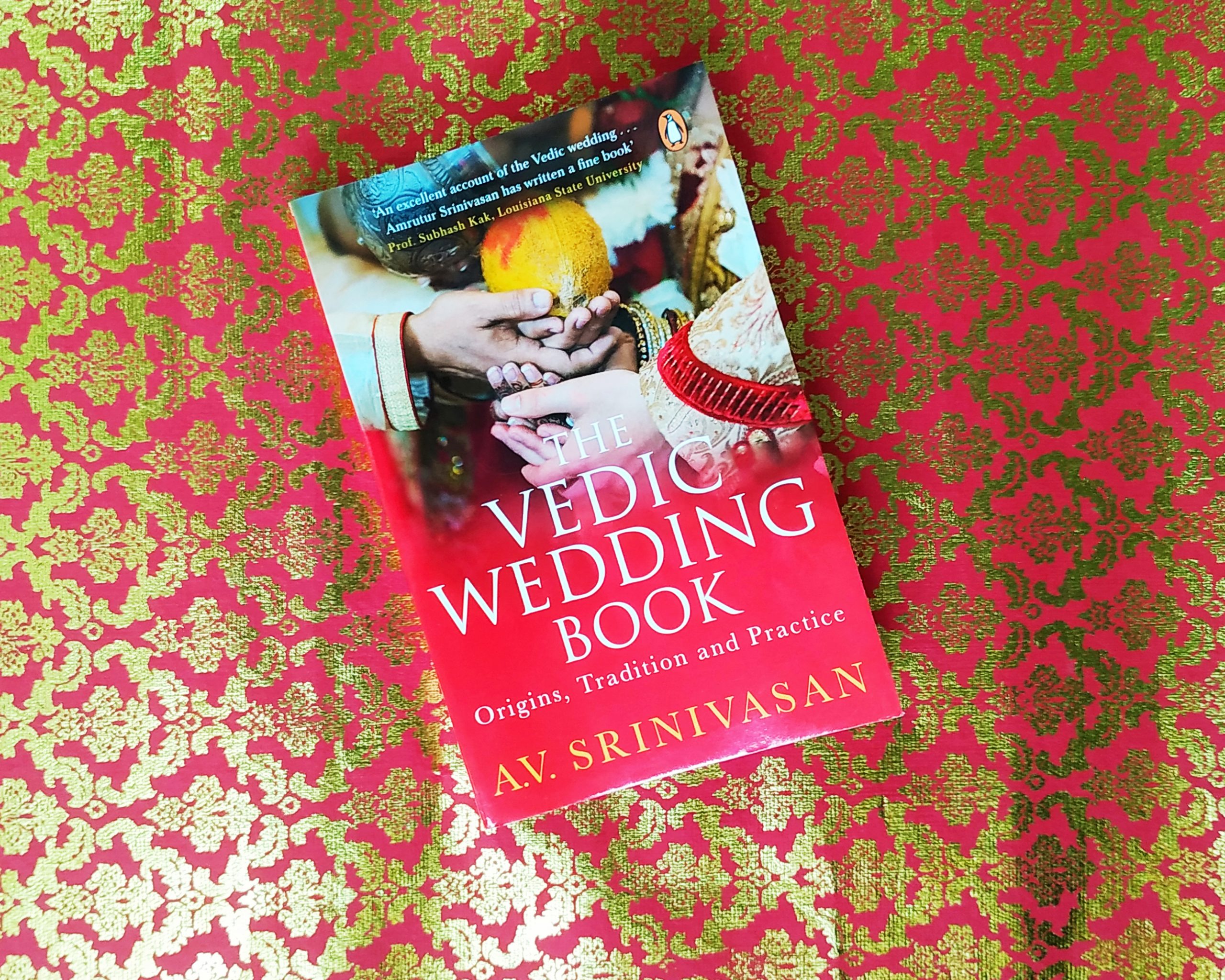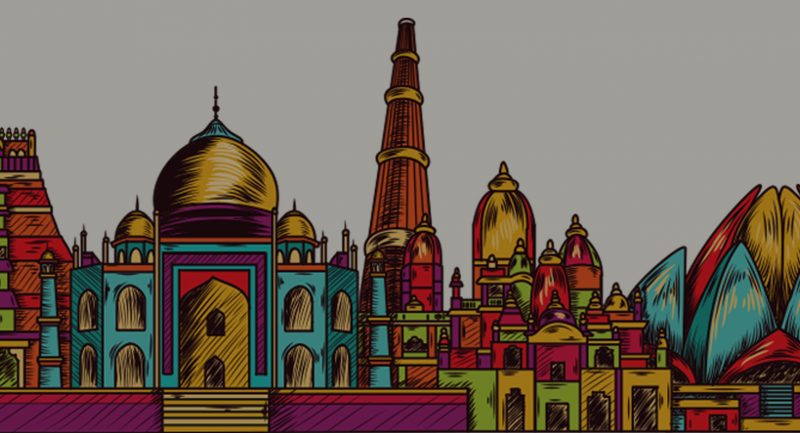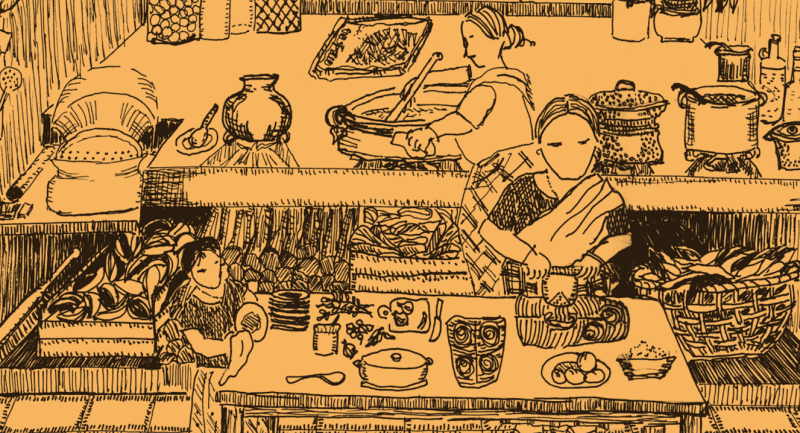
In Vedic Wedding Book, A.V. Srinivasan brings the best of his experiential wisdom as a Hindu priest and scholar in the US in uniquely accessible explanations of each ritual of the traditional ceremony, along with a wealth of knowledge about their origin, variations and significance. One of its kind, this book will help you understand and appreciate, as well as execute, the traditional Vedic wedding ceremony and get a flavour of India’s wedding culture, its true meaning and significance.
Here is an intriguing excerpt from the book that explains the tradition of Kanyadaan!
——————————————————————-
Kanyaadaan
This important ritual begins with a call to the audience to bless this moment. This and similar requests throughout the ceremony not only engage the audience but convey the message that the assembled are witness to an important commitment being made at the mandap. Everyone present is requested to respond with ‘tathaastu’ at the end of each phrase:
Permissions
ayaṁ muhūrtassumuhūrtostviti bhavānto mahānto
anugṛhṇantu
kartavye asmin śubha vivāha karmaṇi bhavānto
mahānto adhibruvantu
oṁ puṇyāhaṁ bhavanto adhibruvantu
oṁ ṛddhiṁ bhavanto adhibruvantu
oṁ svasti bhavanto adhibruvantu
May you, the great assembled, grant this present time to be
auspicious.
May you, the great assembled, express that this wedding task
be auspicious.
May you express this day to be auspicious.
May you express this to be successful.
May you express your blessings.
With this set of permissions granted, the kanyaadaan ceremony begins:
kanyāṁ kanaka sampannāṁ kanakābharaṇairyutāṁ
dāsyāmi viṣṇave tubhyaṁ brahma loka jigīṣayā
kanye mamāgrato bhūyāt kanyeme deviparśvayoh
kanyeme sarvato bhūyāt tvaddānānmokṣamāpnuyāṁ
viśvambharāh sarvabhūtah sākṣiṇyah sarvadevatāh
imāṁ kanyāṁ pradāsyāmi pitṝṇāṁ tāraṇāyaca
kanyāṁ sālaṅkṛtvā sādhvīṁ suśīlāya sudhīmate
prayatoham pradāsyāmi dharma kāmārtha siddhaye
May I offer to you, the embodiment of Vishnu, this, my
daughter, foremost among all young women, by my side,
covered with golden ornaments, so that I may obtain
salvation in Brahmaloka.
With all the gods and these witnesses, in order to liberate
my ancestors and to achieve dharma, artha and kama, I give
away this gift, my daughter who is virtuous, intelligent and
beautifully adorned.
Upon these statements of purpose the priest arranges the palms of the principals as follows:
1. On the outstretched palms of the groom, place the palms of the bride and on these place those of the bride’s
father.
2. Now keep a coconut smeared with kumkum and haldi on the topmost palm.
3. The bride’s mother is now positioned behind the three such that she is facing the audience squarely.
4. As the priest (or the bride’s father) chants the following mantras, the bride’s mother pours water over the coconut in a thin stream and the audience is requested to say ‘tathastu’ at the end of each phrase.
5. A child is positioned to hold a bowl below to collect the water, which is poured until all the phrases are
chanted.
During this sequence, the mangalasutra is taken around by a family member to be blessed by the elders present.
śrīrūpiṇīṁ imāṁ kanyāṁ śrīdhara rūpiṇe
tubhyaṁ ityukta udaka pūrvāntāṁ
kāyenavācāmanasā dadāmyasmai
kanyā tārayatu
puṇyaṁ vardhatāṁ
saumanasyamastu
akṣataṁ cāriṣṭañcāstu
dīrghamāyuh śreyah śāntih puṣṭih tuṣṭih cāstu
yachreyastadastu
yat pāpaṁ tatpratihatastu
puṇyāhaṁ bhavanto bruvantu
svasti bhavanto bruvantu
ṛddhiṁ bhavanto bruvantu
śrīrastviti bhavanto bruvantu
With this in my mind, and with this ritual and before the ceremonial water is poured,
May I offer you, who are in the form of Vishnu, my daughter
in the form of Lakshmi.
May my daughter gain protection. May holiness prosper. May
there be joy. May she be whole. May she live long, flourish,
be at peace, well-nourished and content. May prosperity
prevail. May any ills be struck down. May you grant this day
to be a happy one. May you bless her well-being. May you
grant her abundance. May you grant her respect and status.
An immensely accessible guide, The Vedic Wedding Book will take you to the roots of the Hindu wedding ceremony, on a journey of its evolution from the Rig Vedic times to the present day.









